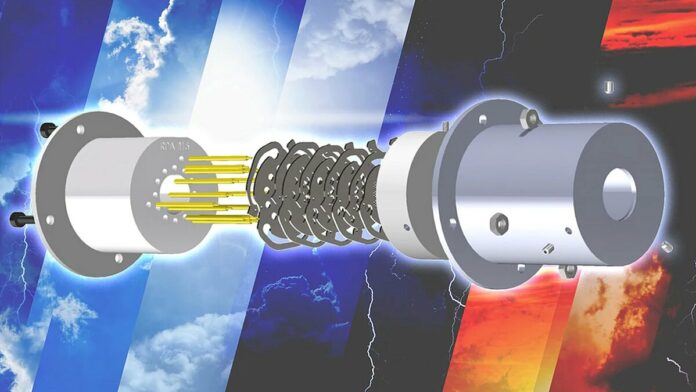Through a newly developed digital process, Massachusetts Institute of Technology (MIT) scientists have created low-cost plasma sensors for orbiting spacecraft. In contrast to the plasma sensors that get manufactured in a cleanroom, the 3D-printed sensors can be produced for tens of dollars in a matter of days.
Due to the low cost and speedy production, the 3D printed plasma sensors, also known as retarding potential analyzers (RPAs), are ideal for CubeSats, which are used for monitoring the environemnt or predict the weather. By using the glass-ceramic in a fabrication process that was developed for 3D printing with plastics, there were able to create sensors with complex shapes that can withstand the wide temperature swings a spacecraft would encounter in lower Earth orbit.
“Additive manufacturing can make a big difference in the future of space hardware. Some people think that when you 3D-print something, you have to concede less performance. But we’ve shown that is not always the case. Sometimes there is nothing to trade off,” says Luis Fernando Velásquez-García, a principal scientist in MIT’s Microsystems Technology Laboratories (MTL) and senior author of a paper presenting the plasma sensors. “When you make this sensor in the cleanroom, you don’t have the same degree of freedom to define materials and structures and how they interact together. What made this possible is the latest developments in additive manufacturing,” Velásquez-García says.
Rethinking fabrication
The 3D printing process for ceramics typically involves ceramic powder that is hit with a laser to fuse it into shapes, but this process often leaves the material coarse and creates weak points due to the high heat from the lasers.
Instead, the MIT researchers used vat polymerization, a process introduced decades ago for additive manufacturing with polymers or resins. With vat polymerization, a 3D structure is built one layer at a time by submerging it repeatedly into a vat of liquid material, in this case Vitrolite. Ultraviolet light is used to cure the material after each layer is added, and then the platform is submerged in the vat again. Each layer is only 100 microns thick (roughly the diameter of a human hair), enabling the creation of smooth, pore-free, complex ceramic shapes.
In digital manufacturing, objects described in a design file can be very intricate. This precision allowed the researchers to create laser-cut meshes with unique shapes so the holes lined up perfectly when they were set inside the RPA housing. This enables more ions to pass through, which leads to higher-resolution measurements.
Because the sensors were cheap to produce and could be fabricated so quickly, the team prototyped four unique designs.
While one design was especially effective at capturing and measuring a wide range of plasmas, like those a satellite would encounter in orbit, another was well-suited for sensing extremely dense and cold plasmas, which are typically only measurable using ultraprecise semiconductor devices.
This high precision could enable 3D-printed sensors for applications in fusion energy research or supersonic flight. The rapid prototyping process could even spur more innovation in satellite and spacecraft design, Velásquez-García adds.
Moving forward, the goal is to reduce the thickness of layers or pixel size in glass-ceramic vat polymerization in order to create a complex hardware that is even more precise.
Remember, you can post job opportunities in the AM Industry on 3D ADEPT Media free of charge or look for a job via our job board. Make sure to follow us on our social networks and subscribe to our weekly newsletter : Facebook, Twitter, LinkedIn & Instagram ! If you want to be featured in the next issue of our digital magazine or if you hear a story that needs to be heard, make sure you send it to contact@3dadept.com






